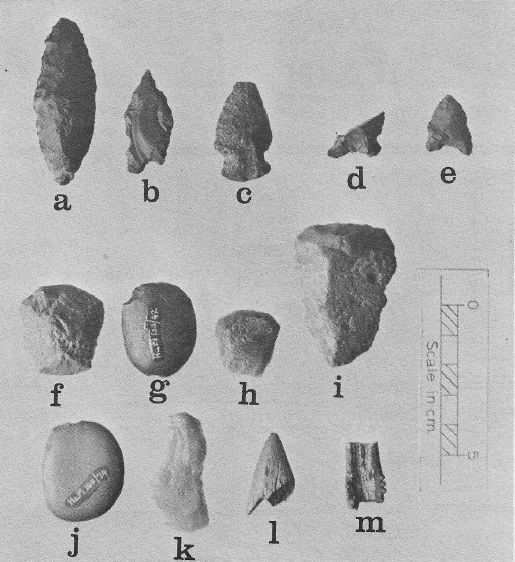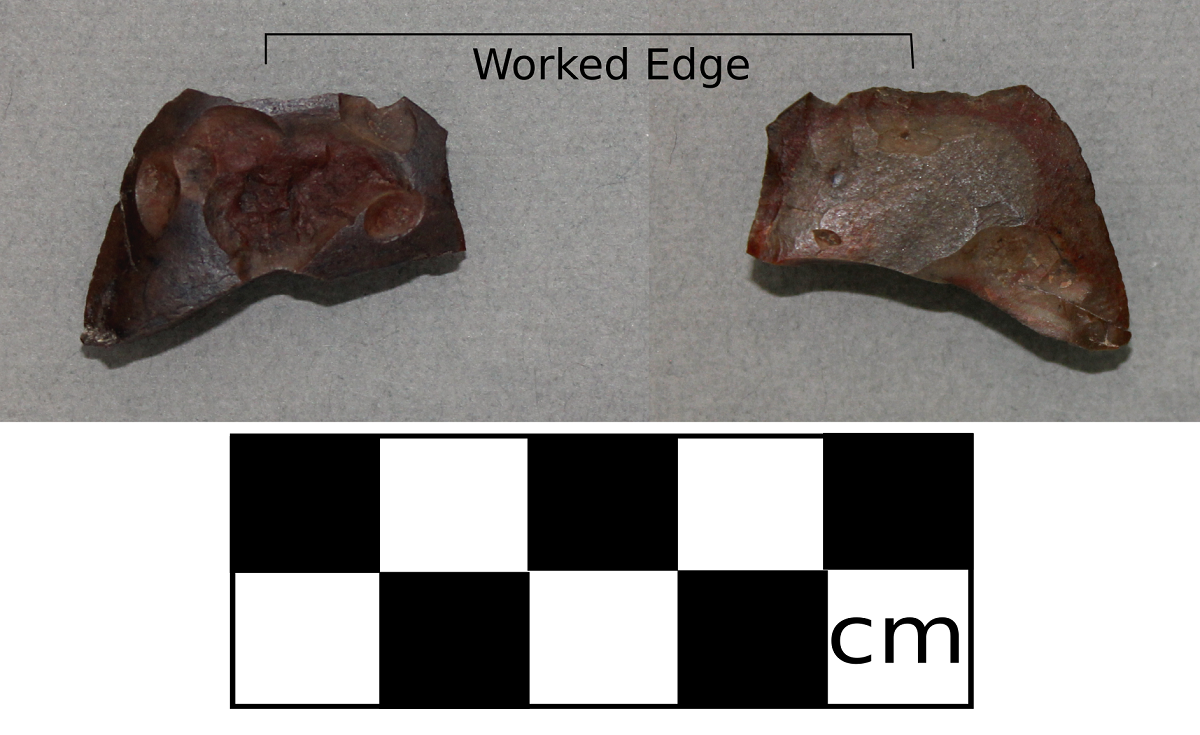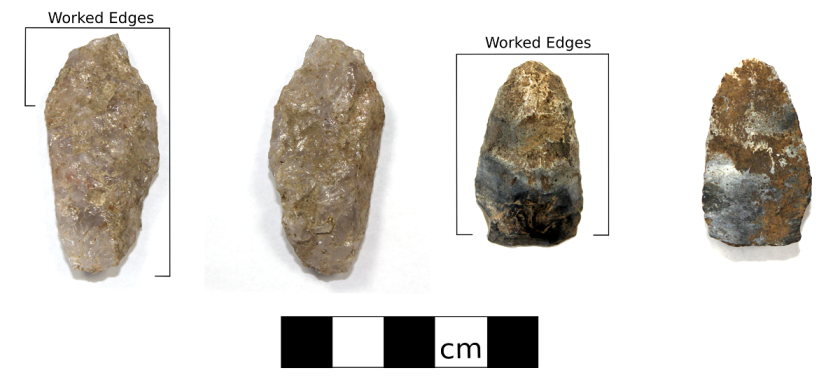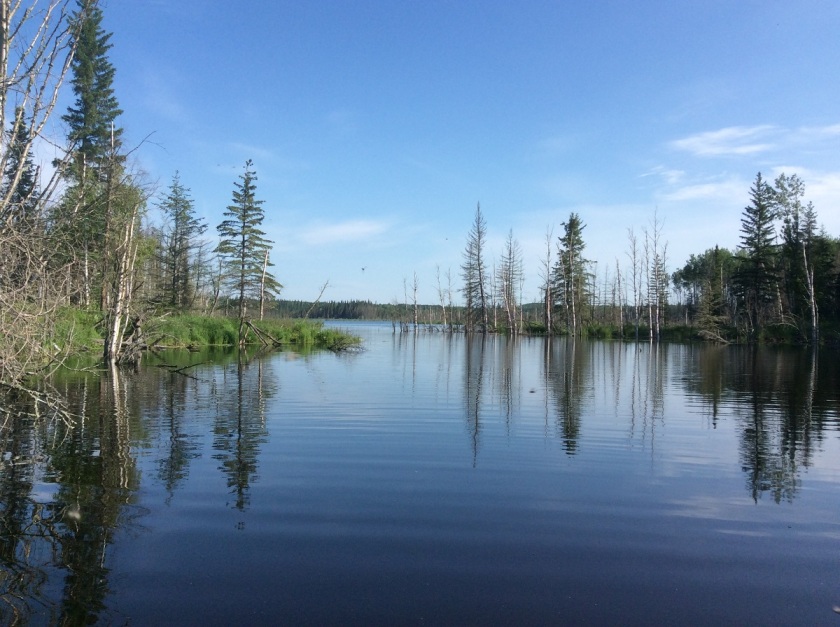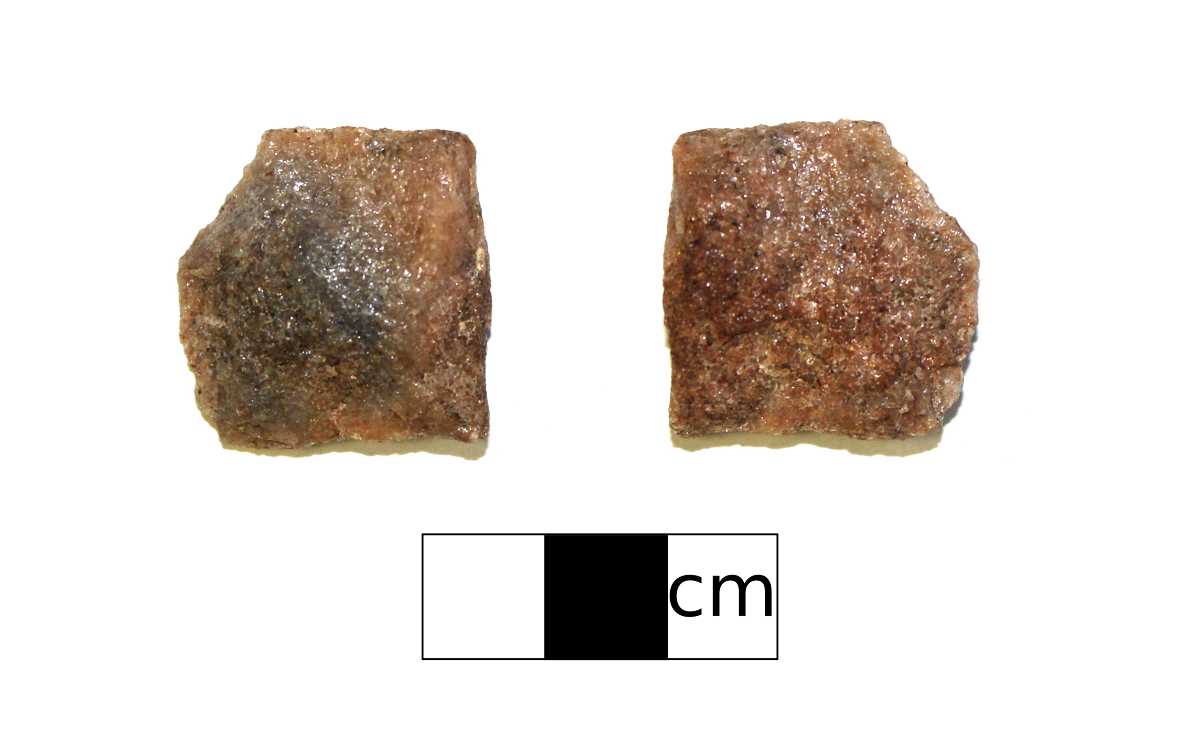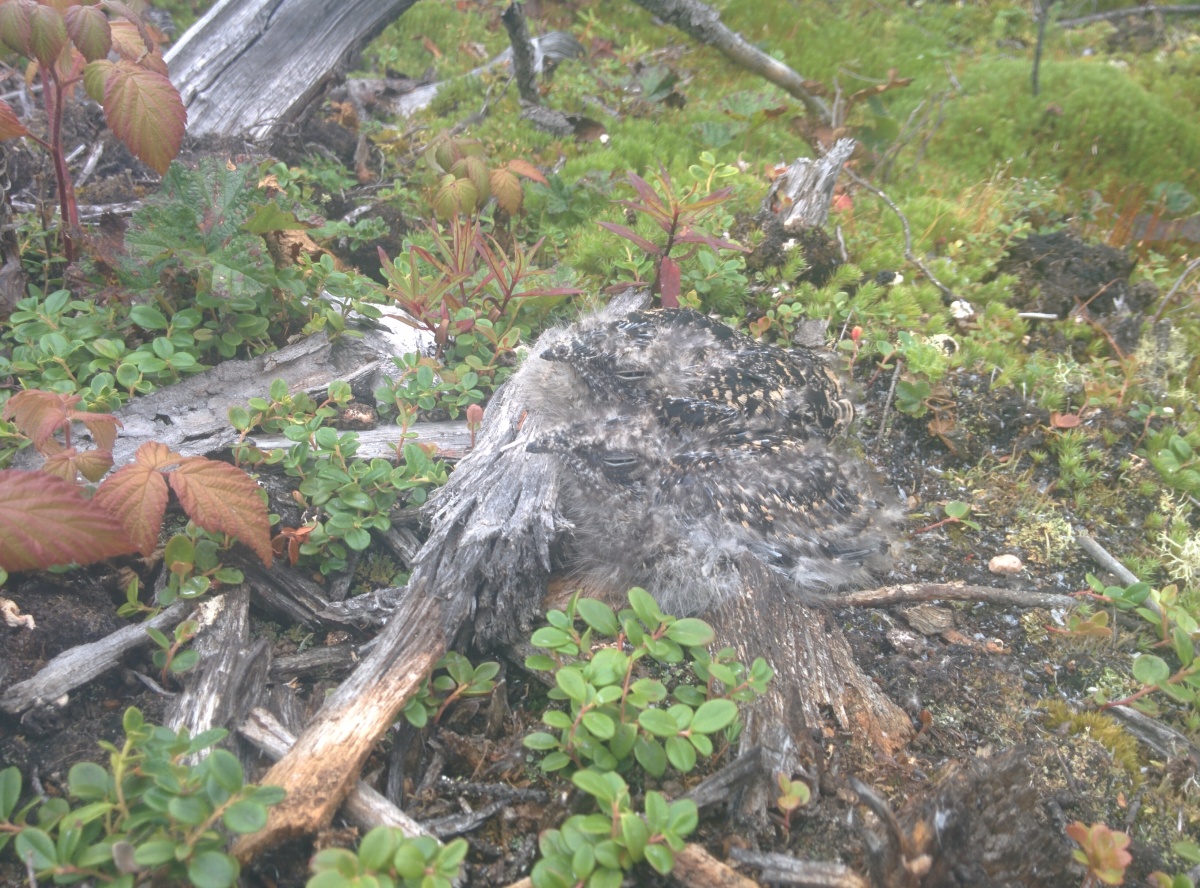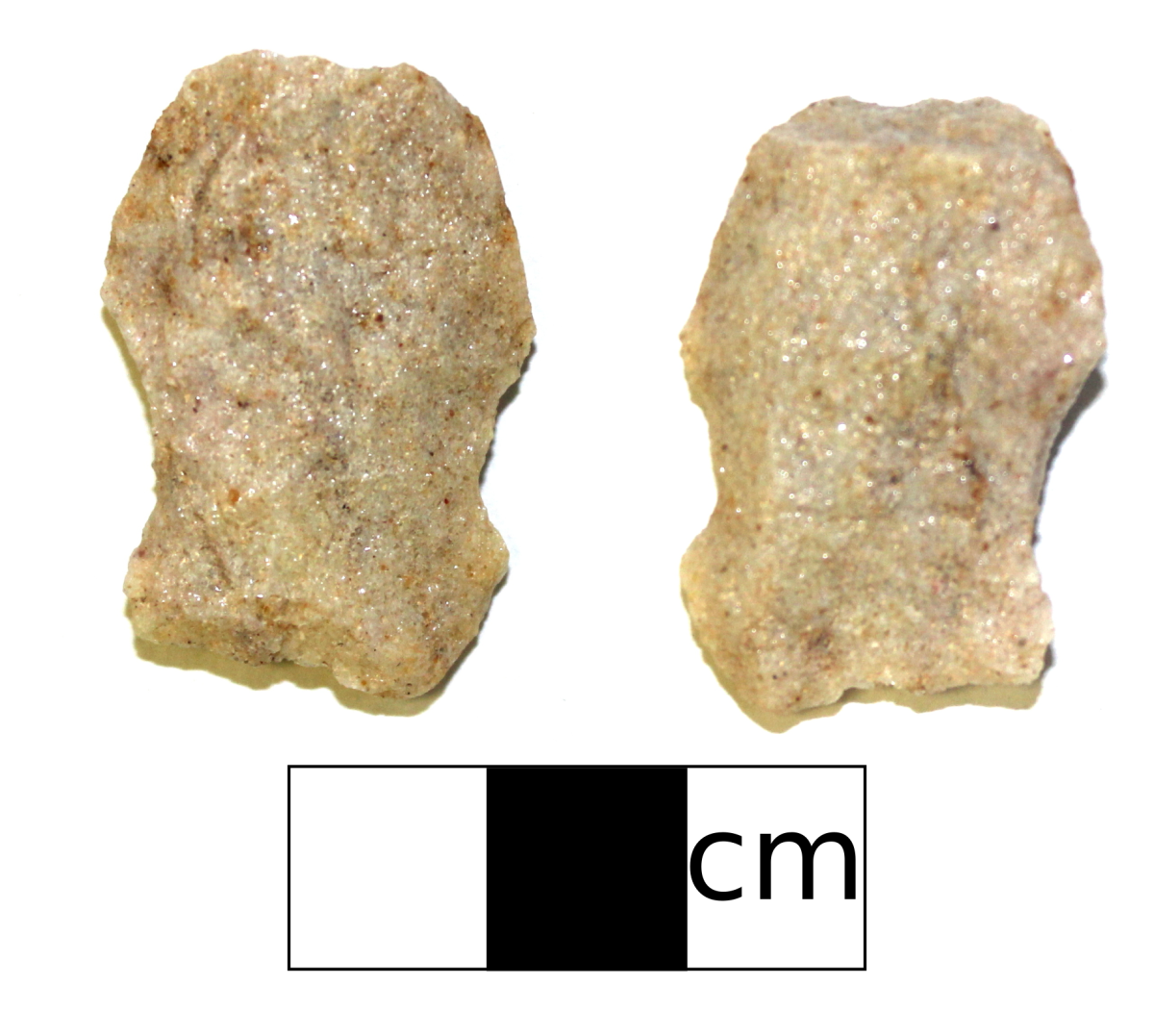Although the Wabasca-Desmarais regions is rich in cultural heritage, very few in-depth archaeological investigations have been conducted. HaPl-1, also known as the Alook site, is one of the few sites in the region that has actually been excavated or received any interest past its initial identification. In the 1960s and again in the 1070s, a team from the University of Alberta did preliminary excavations at the site. The results speak of a very long history!
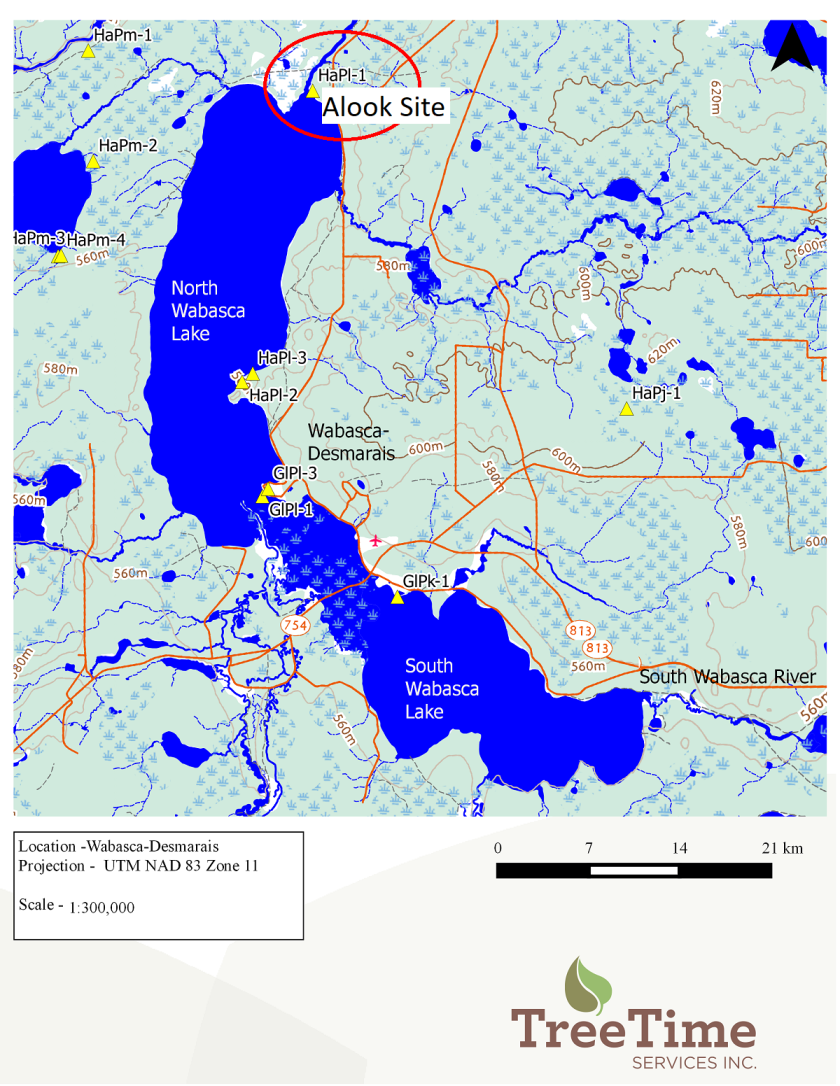
The Alook Site was found on a small knoll along the north shore of the North Wabasca Lake. The site is named after John Alook, a band council member who lived in the area. In the early years of archaeology in Alberta sites were often named after the landowner or the person who reported the site, although it is unclear if John Alook was one of these people or named in his honour. Test excavations were conducted by the University of Alberta in 1969, but the band did not receive a report of the initial findings until 1977. Later that summer additional excavations were conducted under the direction of Cort Sims.
Excavations at the Alook Site included three 1×2 meter test trenches excavated in 1969, and a 4×8 meter excavation trench that was placed directly east of these in 1977. These trenches focused on the undisturbed western part of the knoll, as the eastern part was a little disturbed by a garden, and the reported possible location of the original house. The 1969 excavations recovered a total of 891 artifacts. The types of artifacts found suggested that HaPl-1 was an indigenous campsite that had seen substantial use. The artifact types included projectile points, biface fragments, scrapers, and an assortment of lithic debitage. One of the most significant finds was a McKean projectile point, found in the garden. The McKean point suggested that the site dates to the Middle Prehistoric period, or approximately 4200 to 3000 years before present.
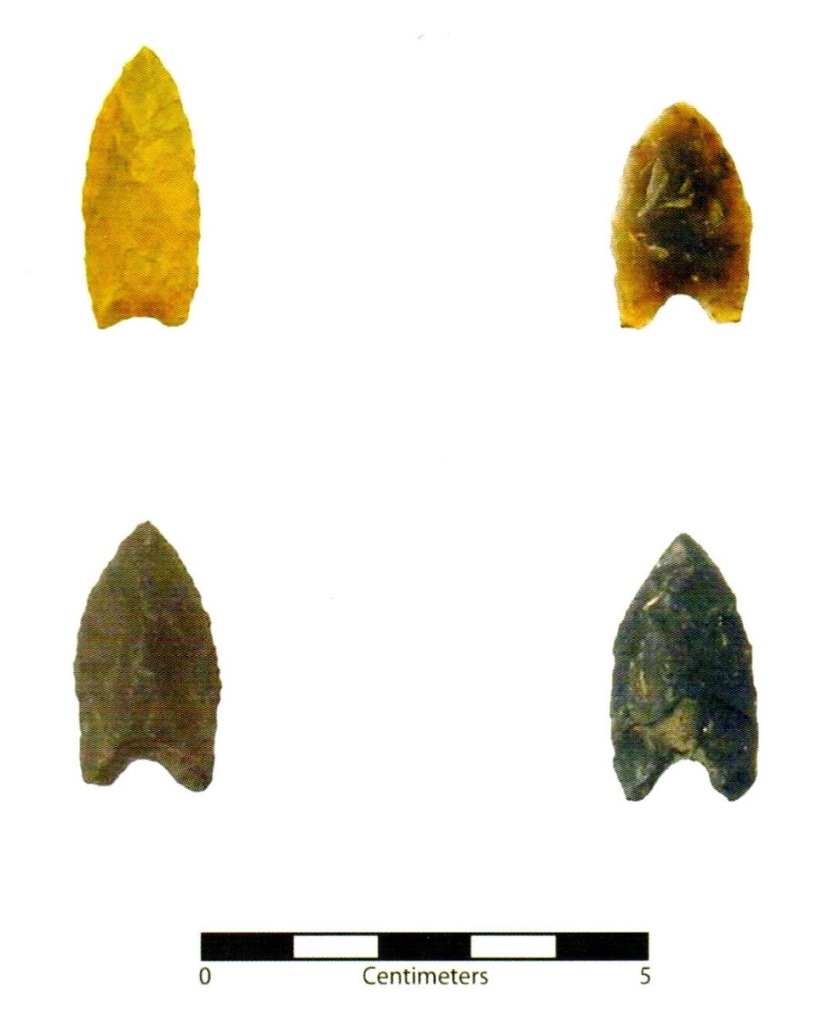
The 1977 excavations helped us understand more of the site and its use by past peoples. A total of 131 stone tools and tool fragments were recovered. The recovered artifacts reinforced the initial suggestion that HaPl-1 is a campsite that had seen significant use. Seventeen projectile points and 11 projectile point fragments were found at the site. Points are also considered “diagnostic” artifacts, because variations in style can reflect change over time, or points made by different cultural groups. Some of the projectile points were also of the Plains arrowhead type, which generally date from 1100 to 250 years before present. These can tell us what kinds of hunting activities were being done in the area. That fact that both McKean and Plains projectile points were recovered is significant, as it shows this site was occupied at multiple times throughout the past.
Almost 40 scrapers were found, which tell us that hide processing was likely a major activity at the site. The other tool types found include utilized flakes, hammer stones, anvils, an adze and adze fragment, core fragments, bifaces, and worked pebbles. The number and variety of tools found at the site were what led researchers to suggest that this site was a major campsite, since these artifacts suggests that a multitude of different activities occurred at this location. These tools probably reflect activities as diverse as making stone tools, drying meat or fish, and wood-working. These activities are all consistent with traditional life at a major lakeshore campsite or summer settlement.
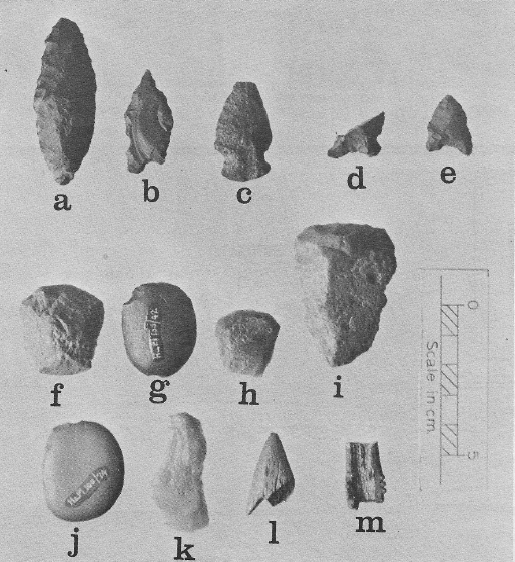
During the 1977 excavations a midden feature, or refuse pile, was also uncovered. Since one of the goals of the work that year was to recover some organic material for radiocarbon dating, this was a substantial find. Radio carbon dating provided an age of 2165 to 1815 years before present, which places the site within the Besant phase. This date, combined with the McKean and side-notched projectile points found, show that this site was likely in use from at least 4000 years ago to the present. To put this in perspective, HaPl-1 was likely occupied long before the Roman Empire came into existence and is still in use today, as at present the site contains a modern house. Talk about continuity!
Although a substantial amount of information was learned from the excavations at HaPl-1, there is still much more work needed to gain a better understanding of the past life-ways of people in the Wabasca-Desmarais region. Cultural heritage is important for bringing people together and creating a dialogue of openness and acceptance in the region. First Nations people have inhabited the region surrounding the modern town of Wabasca-Desmarais for more than 4000 years (and more likely 10 000 years). This is an aspect of our heritage and history shared by all Albertans. Stories like this are a part of all of our heritage we are all treaty peoples and share a collective history.

